In Photos: How Ancient Sharks and 'Sea Monsters' Inspired Mayan Myths
Shark teeth
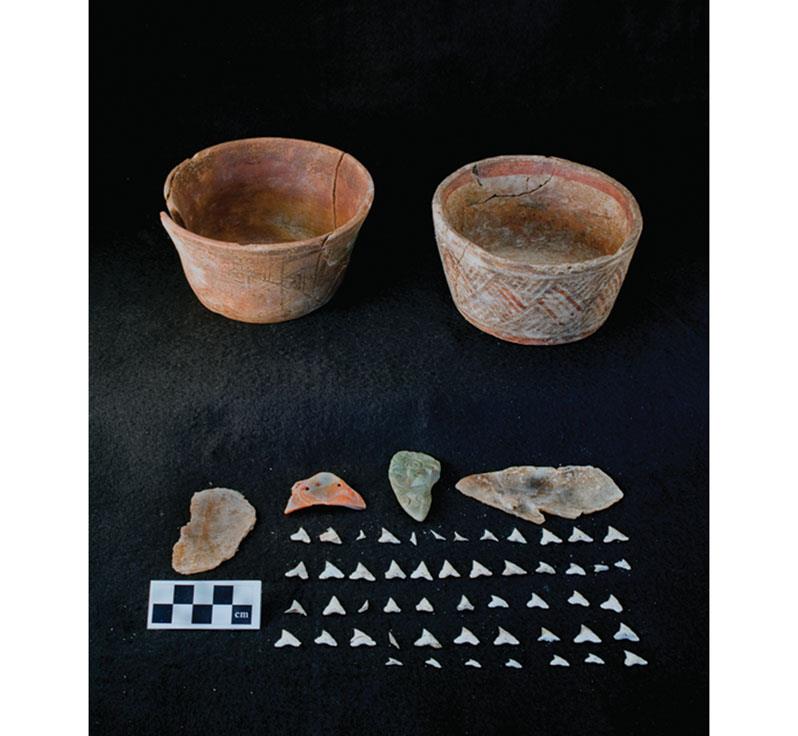
Sharks, both real and imagined, had an important place in the mythology of the ancient Maya, according to Sarah Newman, an archaeologist at James Madison University and author of a new archaeological study into shark remains and shark-based art found at Mayan sites in Central America.
Shark teeth and other marine items such as seashell, stingray spines and coral are often found in buried offerings at Maya sacred sites, where they were used to represent the oceans in a ceremonial model of the Mayan concept of the universe.
The cache of sacred artifacts shown here was buried at a Maya pyramid at El Zotz in Guatemala between 725 A.D. and 800 A.D. It includes 47 teeth from the upper jaw of what was probably a single requiem shark. [Read full story about how giant sharks may have influenced Mayan monster myths]
Trade and ceremony
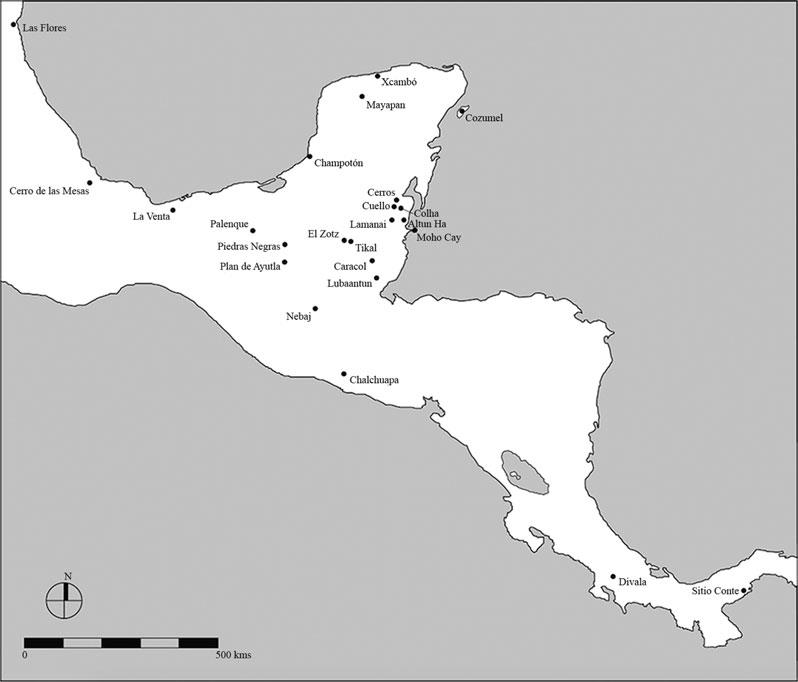
Newman's research notes that shark remains are often found at ancient Maya sites at relatively long distances from the coasts, where the sharks were hunted.
It's likely that sharks teeth and other marine items made their way to the inland Maya cities, shown on this map, as trade items for ceremonial use.
Sacred caches
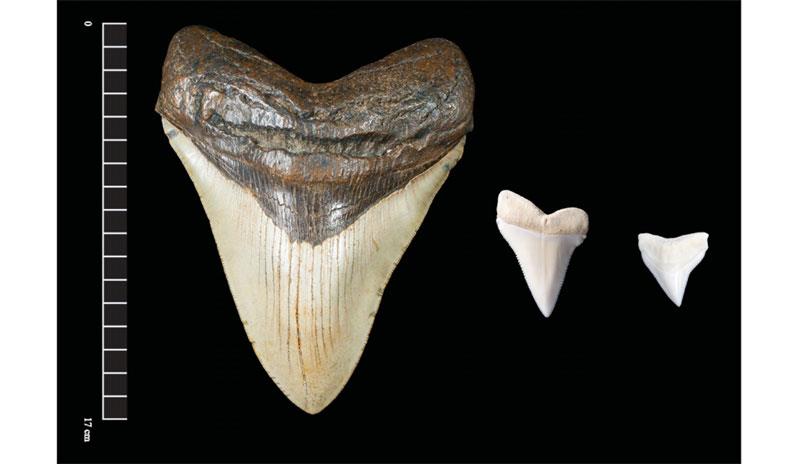
The fossilized giant teeth of extinct megalodon sharks have also been found in sacred caches buried at several ancient Maya sites.
This image shows a fossilized megalodon tooth, with the tooth of a great white shark (center) and a bull shark.
Get the world’s most fascinating discoveries delivered straight to your inbox.
Predators
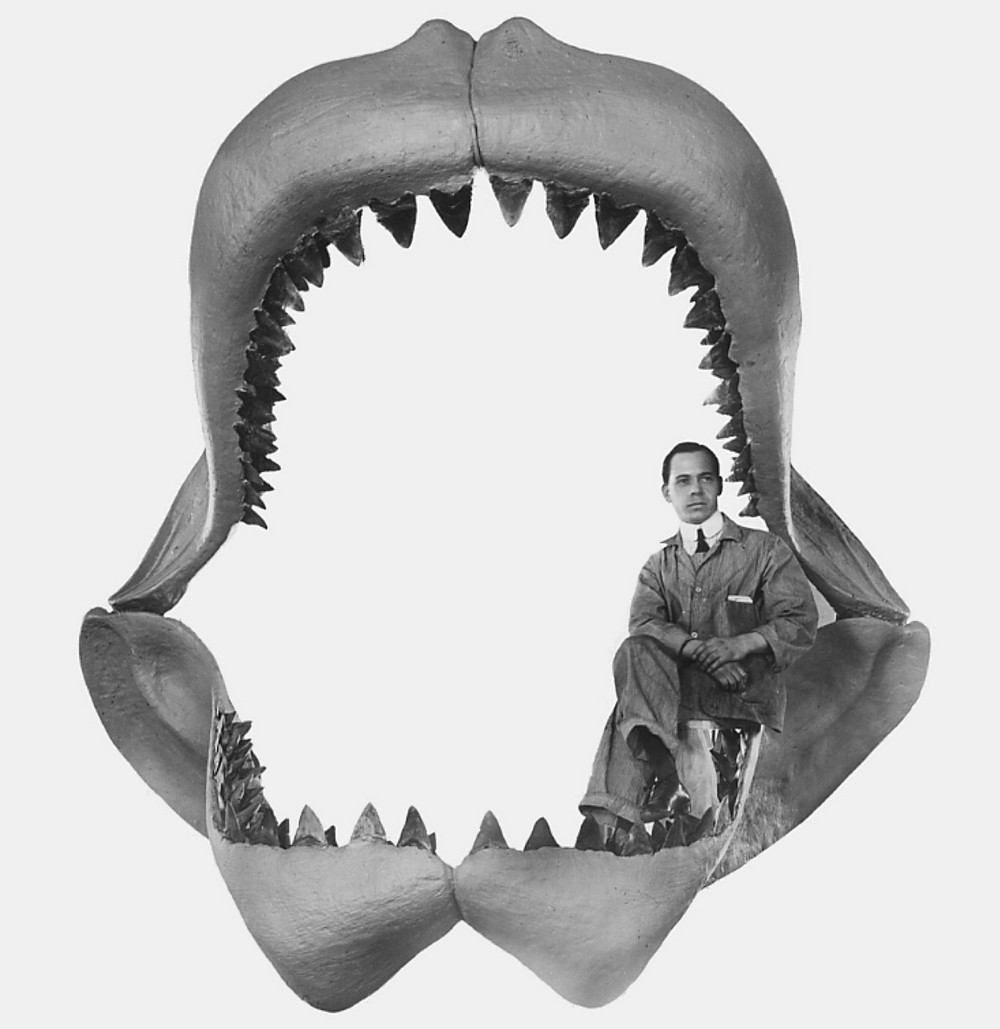
Megalodon sharks were an apex predator in the oceans from 23 million years ago until they died out around 2.6 million years ago.
The giant sharks could weigh up to 110 tons and reach up to 65 feet (20 meters) in length – about 30 times larger than a great white shark.
This photograph from 1909 shows the American zoologist Bashford Dean sitting in a reconstruction of the jaws of a megalodon that were found in South Carolina.
Myth from truth

Sea monsters from Mayan mythology such as Sipak (known as Cipactli in the Aztec language) were often portrayed with a single giant tooth, which Newman thinks could have been inspired by the fossilized megalodon teeth found at ancient Mayan sacred sites.
This depiction of a shark-like sea monster is drawn from a glazed ceramic plate dated to the Early Classic Maya period (250 A.D. - 350 A.D.), found in the Petén Basin region of Northern Guatemala. [Read full story about how giant sharks may have influenced Mayan monster myths]
Power and defeat

Maya sites in Central America where megalodon teeth were used as sacred offerings include the city of Palenque in southern Mexico's Chiapas State, which reached the height of its powers under king Pakal the Great between 615 A.D. and 683 A.D.
Palenque was at war with rival Maya city states in the 8th century, and by the end of the 9th century, it was mostly abandoned.
Awe-filled images

The Mayan name for sharks and sea monsters is the word "xook," shown in writing by this logograph.
Researchers think the glyph may represent a stylized bull shark, a common shark species in Central America.
Xook and its shark-like logograph were also used as part of the adopted name of several famous kings and queens in Mayan history – perhaps signifying a mythical or totemic connection to the fearsome sea creatures.
Gods and sharks
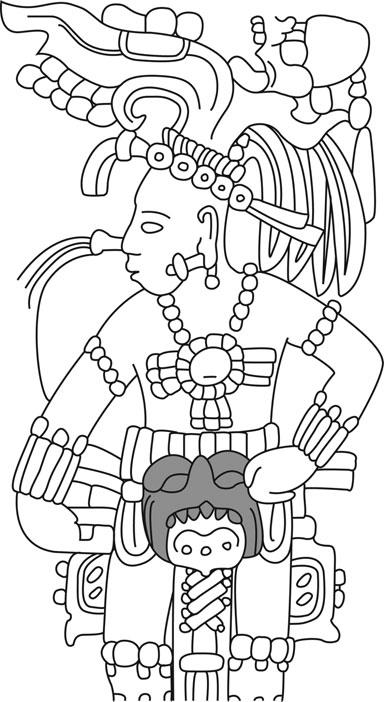
Shark-like features and references to mythological sea-monsters also appear in portrayals of other Mayan gods.
In one version of the Maya creation myth, the Maize God is born from the open jaws of the dying sea-monster Sipak.
In this image from a carved slab at the Copán Maya site in Honduras, a priest impersonating the Maize God wears the jaws of a shark over his groin. [Read full story about how giant sharks may have influenced Mayan monster myths]
Tom Metcalfe is a freelance journalist and regular Live Science contributor who is based in London in the United Kingdom. Tom writes mainly about science, space, archaeology, the Earth and the oceans. He has also written for the BBC, NBC News, National Geographic, Scientific American, Air & Space, and many others.
